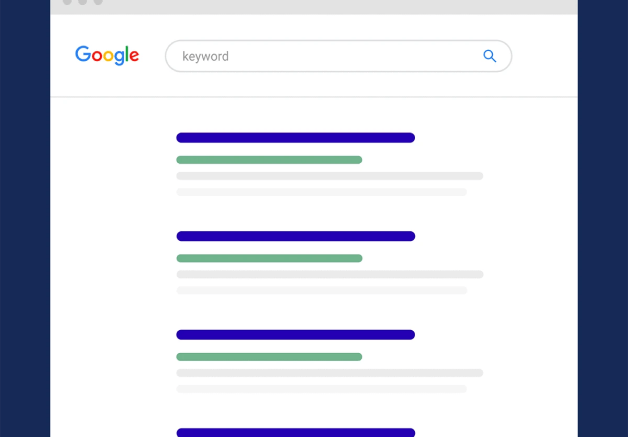Why should your Website be ADA-compliant?
- ADA Compliance, Digital Commerce, User Experience, Website Accessibility

This law prohibits segregation against people with disabilities in all aspects of public life, including work, schools, transportation, and venues open to visitors. The goal of the act is to give handicapped people the same equal opportunities as everyone else.
Given that one of the ADA’s five titles is Public Accommodations, brick and mortar stores, shopping malls, and other businesses that serve the public began to make sure their buildings cater to people with disabilities – From conventional improvements like wheelchair ramps and Braille to counters with a maximum height of 36″, specific restroom guidelines, and many more.
As digitalization continues to move forward, websites and apps have increasingly replaced traditional stores as the place where people visit and shop. Resulting from that, the United States Development of Justice (DOJ) approved the Americans with Disabilities Act Standards for Accessible Design in 2010, requiring all online appearances, such as websites, to be useable to individuals with disabilities and forcing businesses to remove any obstacles that would prevent people with handicaps – like vision impairment and hearing loss – and now including those with cognitive disabilities, from accessing their web content.
4 Key Guidelines to achieve ADA compliance
Perceivable
Images, videos, and text should be visible to those with visual impairments. This means, for instance, using alternative tags for images so screen readers can describe the image to users who are blind. It also requires adequate contrast between font and background to allow legibility.
Understandable
Users should be able to navigate your site using a keyboard instead of a mouse. This is important for people with physical disabilities who may not be able to use a mouse.
Operable
The content on your website should be easy to understand. This includes using clear and simple language as well as making sure your website is easy to navigate.
Robust
Your website should be accessible by those using assistive technologies like screen readers. This means using code that is compatible with these technologies.
5 Reasons to be ADA-compliant
For example, roughly 12 million adults aged 40 and up in the United States suffer vision impairment, according to the CDC (Centers for Disease Control and Prevention). Despite their handicap, this group has similar demands for goods and services as their peers, and hence may be interested in what you have to offer. Indiscernibility and illegibility, however, can result in a poor user experience, denying you access to them as a consumer while opening up opportunities for competitors.
This should also be taken into account when it comes to your marketing efforts. Picture a consumer electronics company investing a considerable amount of money in video production to market their new laptop, auditorily highlighting all of its features and advantages over prior models. However, since the video is not captioned, the organization is severely limiting its audience and potential return on investment.
By ensuring your website along with your promotional outreach is accessible to all, you are not missing out on a larger market share.
Winning such honors is not the only way to build a strong reputation for deploying an inclusive online presence. It can even be as basic as word of mouth, to assist you to drive more exposure and receiving critical acclaim. In regards to customer base enlargement, you can see these guidelines as a path for your company to gain competitive advantage. If you provide an engaging user experience for handicapped people, they
(I) are more likely to take advantage of your offer again in the future
(II) tend to share their positive encounter with others
(III) will appreciate your efforts to provide accessibility for everyone, particularly if they have had negative experiences in the past.
By creating a positive digital experience for all, you can increase engagement, brand awareness, and reputation, eventually leading to more customers.
As a counterexample, take Domino’s Pizza, which was sued under the Americans with Disabilities Act in 2016. With the help of the National Federation of the Blind (NFB), a blind man named Guillermo Robles filed a lawsuit against the pizza chain because its website and mobile app were not accessible to screen readers. The issue was only concluded in 2019, requiring Domino’s to ensure that its digital platforms were compliant with WCAG standards by September 2020, as part of the agreement. By failing to be proactive and take measures to guarantee accessibility from the beginning, the company risked major financial losses and severe brand damage, resulting in several people expressing that they would not order from them again.


Treat such initiatives as opportunities to improve the experience of your online presence for all the users, not just a specific target group, as enhancing readability and usability serves everyone. The same applies to ensuring that your website’s structure and navigation are logical and consistent, making it easy for everyone to find their way around (while eliminating annoyance), and often leading to much higher conversions.
ELASTECH successfully launched a new website and eCommerce platform for H2O+, a widely known vendor of skincare products. As part of our UX/UI design services, we built an interface that improved user engagement and conversion rates while also complying with ADA guidelines.
This case study exemplifies our approach: Accessibility measures should never be considered separately from other UX/UI initiatives. We employ a concept that incorporates both as this helps every organization in multiple ways.
This is the most obvious and perhaps most essential reason to comply with accessibility rules as failure to do so may result in both legal action and significant fines. “Private plaintiffs may file lawsuits alleging discrimination on the basis of disability in violation of the ADA,” according to the ADA (American Civil Liberties Union, n.d.).
Legal fees alone can be astronomical. The DOJ states that if you’re found in violation of ADA guidelines, your first violation may result in a penalty of $55,000 to $75,000. Subsequent violations can result in a $150,000 fine as well as the fact that “the court may order to pay the plaintiff’s reasonable attorney’s fees and costs”. Not to mention the money required to invest in website updates to comply with accessibility statutes.
Overall, ADA cases can be extremely costly with amounts easily exceeding $300.000.
It is also not uncommon for corporations to pay even higher fees for many websites that have the same “barriers to accessibility” or don’t follow ADA requirements. In fact, as shown in a study by UsableNet, 15 percent of 2021’s accessibility lawsuits (or over 500 cases in absolute numbers) were filed against organizations that had previously been sued for having an internet presence that is restricted to people with certain impairments. Multi-brand merchants or businesses that use both a desktop and a mobile application are typical targets for this.
Even if a company wins, the process takes time and can be highly distracting from its core business objectives. Furthermore, unfavorable publicity surrounding a lawsuit can seriously harm a brand, especially with regard to sensitive topics like inclusion.
It is also worth mentioning that courts have found that businesses can be held liable even if they were unaware of the ADA standards or if complying with them would be prohibitively expensive, which forces them to be proactive.
By proactively ensuring adherence from the start, companies can avoid these lawsuits altogether and save themselves time, money, and effort.
Should you pursue the investment to be ADA-compliant?
As we have seen, there are many good reasons to do so. Not only will it help you avoid potential legal action and costly settlements, but it will also improve the experience of your website for all users, not just those with disabilities.
What’s more, by being proactive and ensuring accessibility from the start, you can avoid any potential damage to your brand image that might result from negative publicity surrounding a lawsuit.
Ultimately, ADA compliance can be considered as a path to gaining competitive advantage as well as creating social value and should therefore be an important part of your overall digital strategy.
Having completed numerous successful projects, ELASTECH is a leader in the field of ADA-compliant website design and infrastructure. With our expertise, we assist clients in assuring universal accessibility without sacrificing user experience and conversion rates.
We offer the opportunity for us to conduct an assessment of your website or apps, to discuss your current ADA concerns. We will highlight some of the important violations, and discuss the potential of you addressing them directly, as well as a roadmap of what we could do to serve you and leverage our successes for your benefit.
We invite you to schedule a call to take advantage of this offer by clicking below.
Book your free appointment with an ADA Expert
How companies need to play in order to win the war for telent
